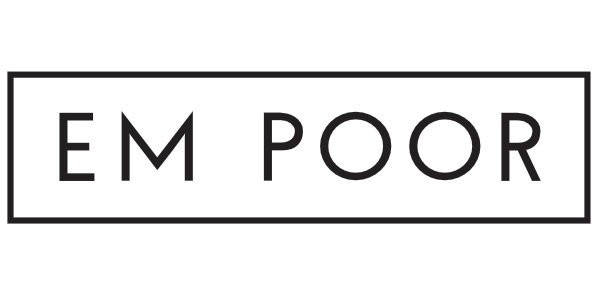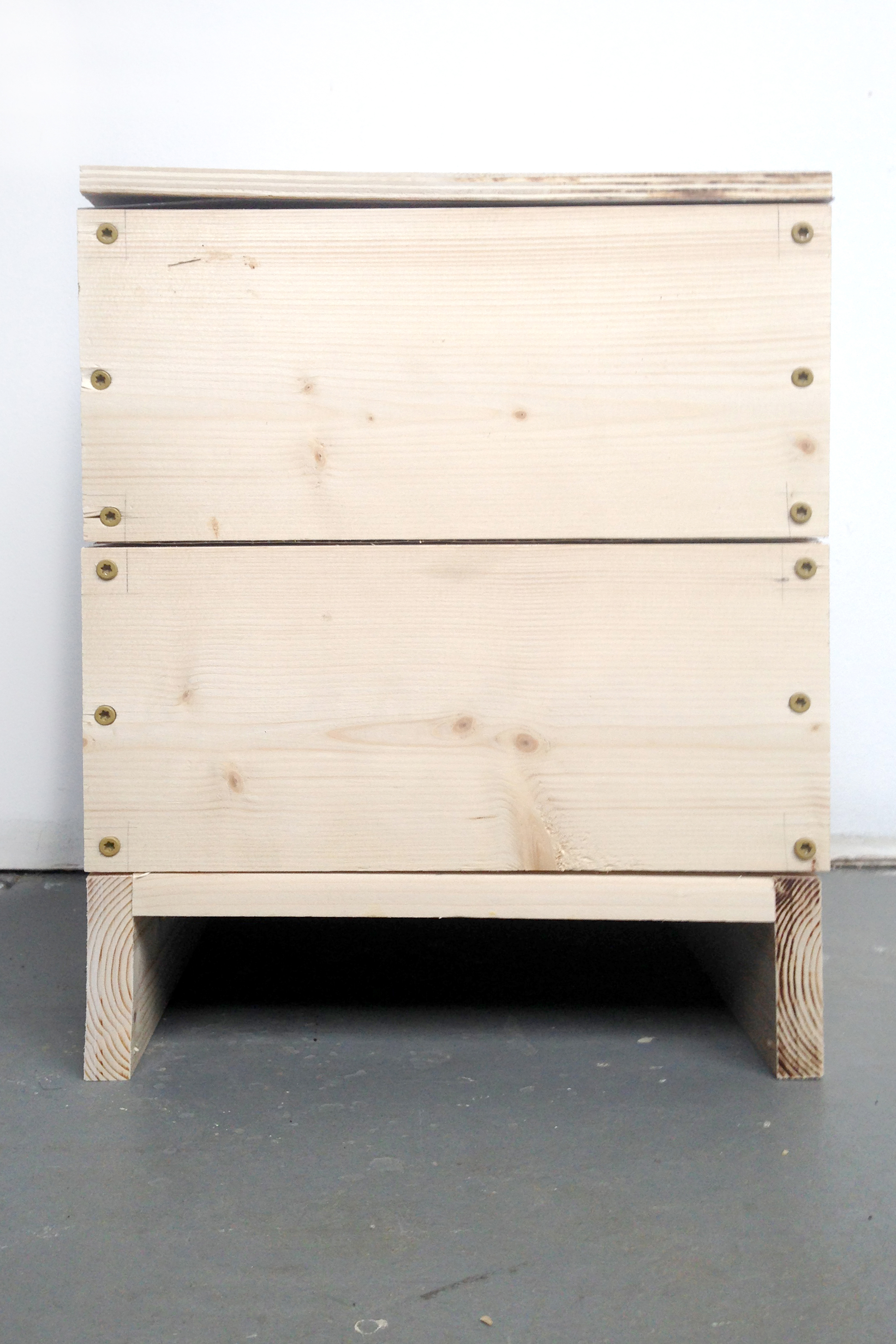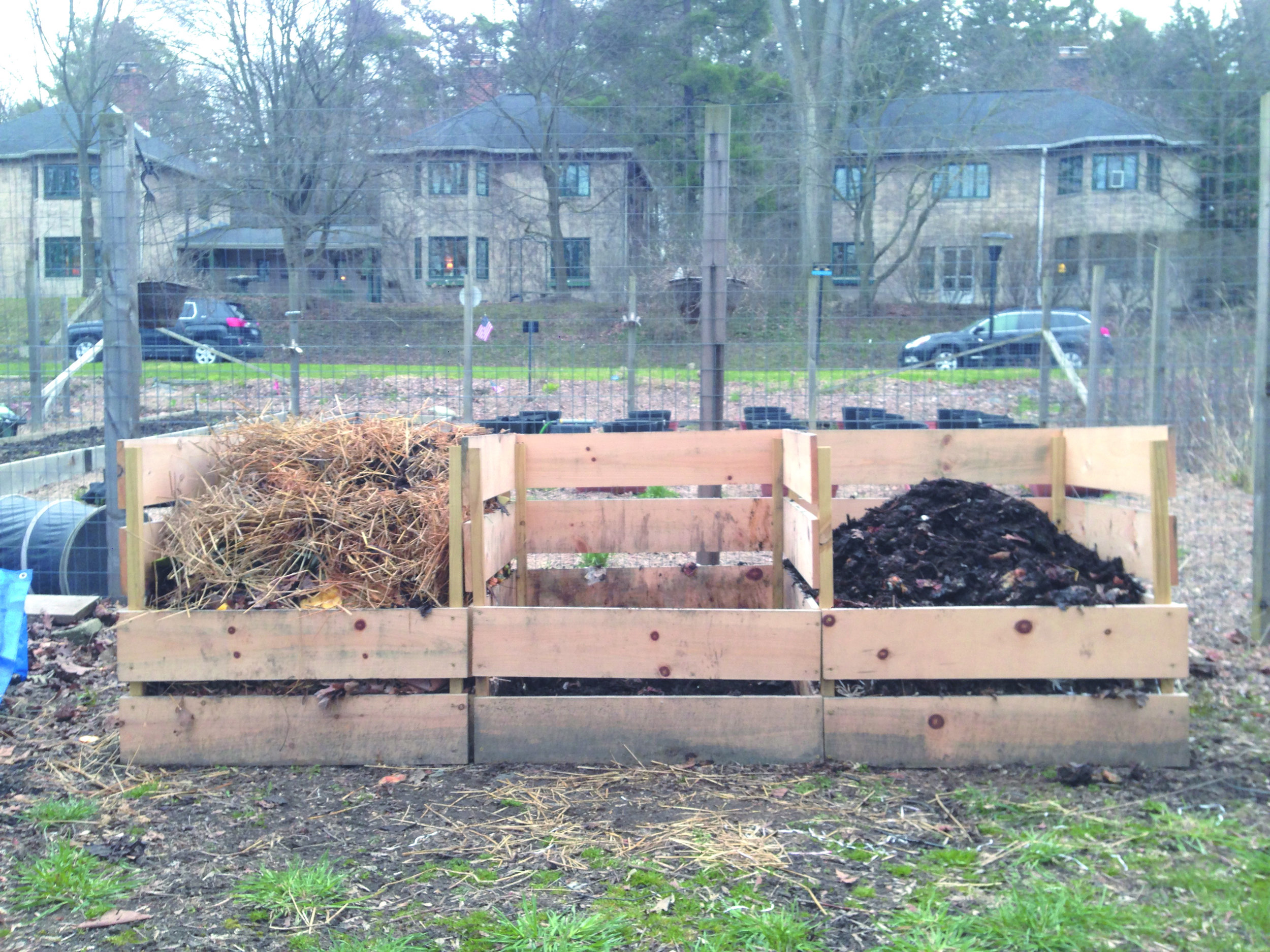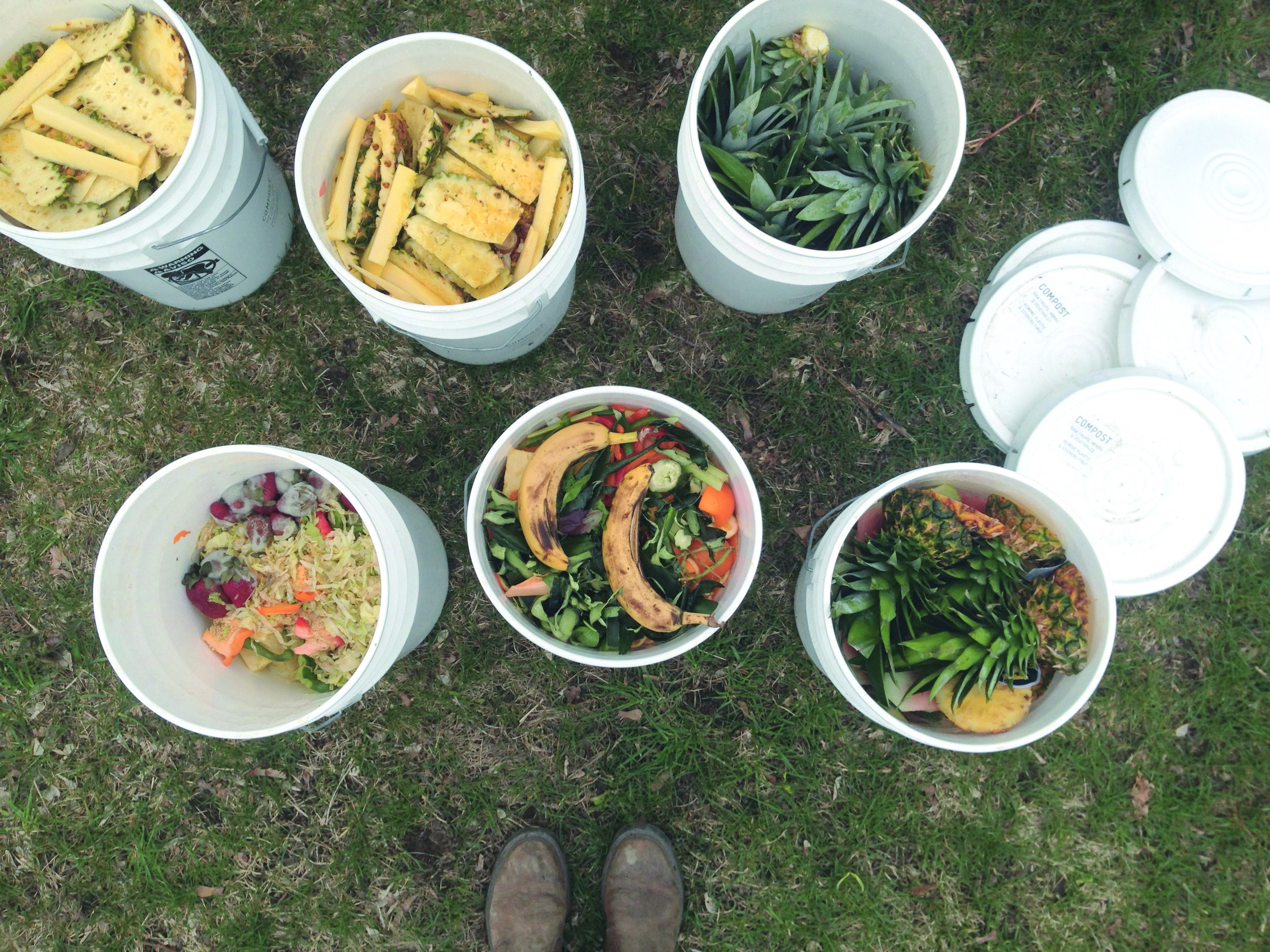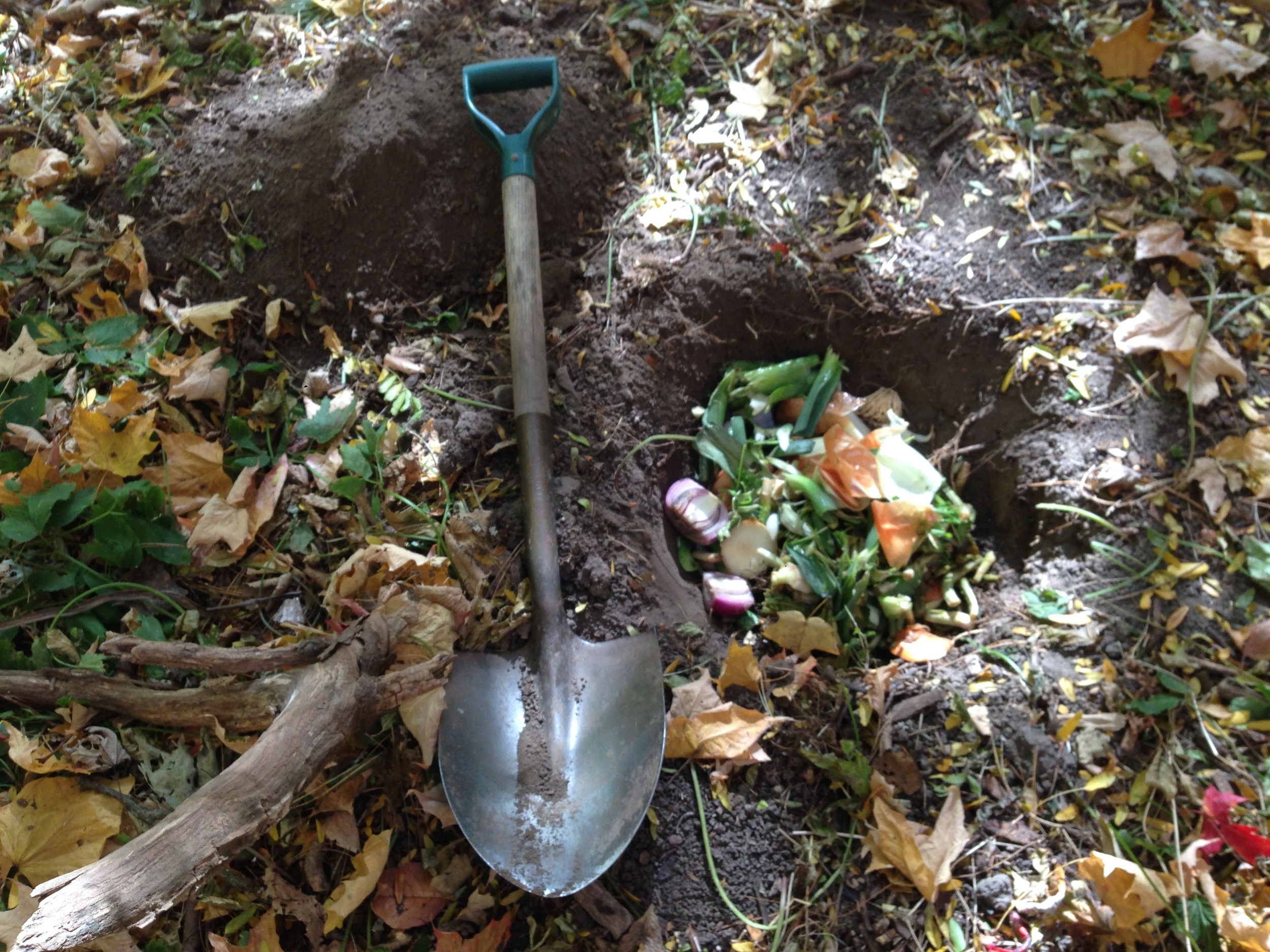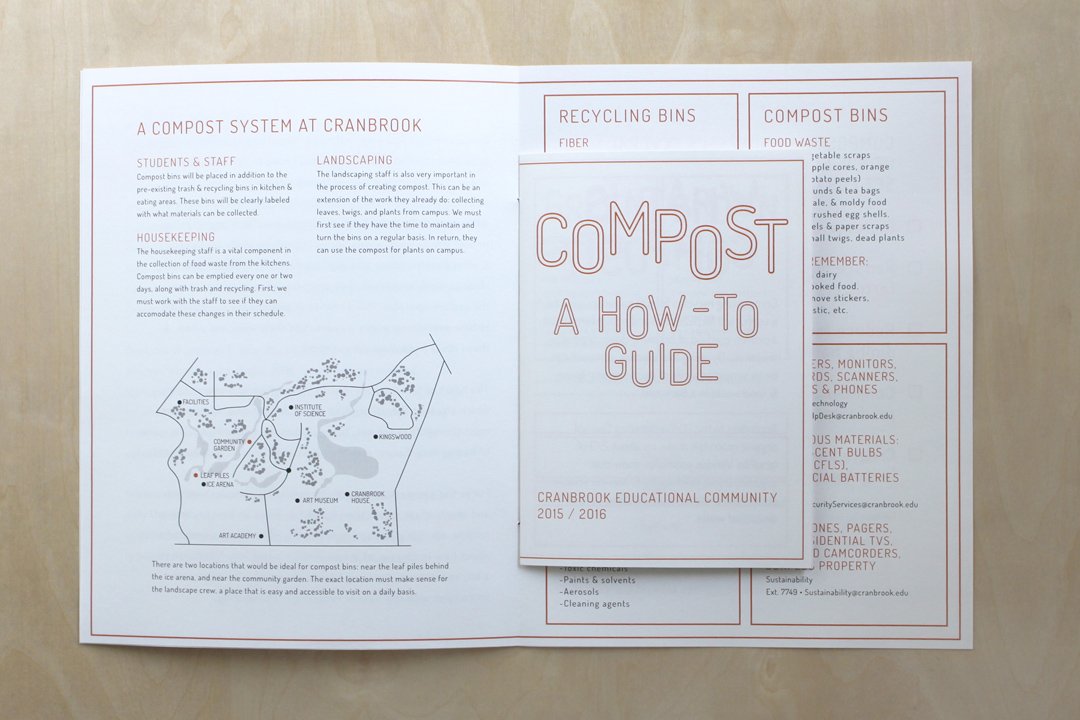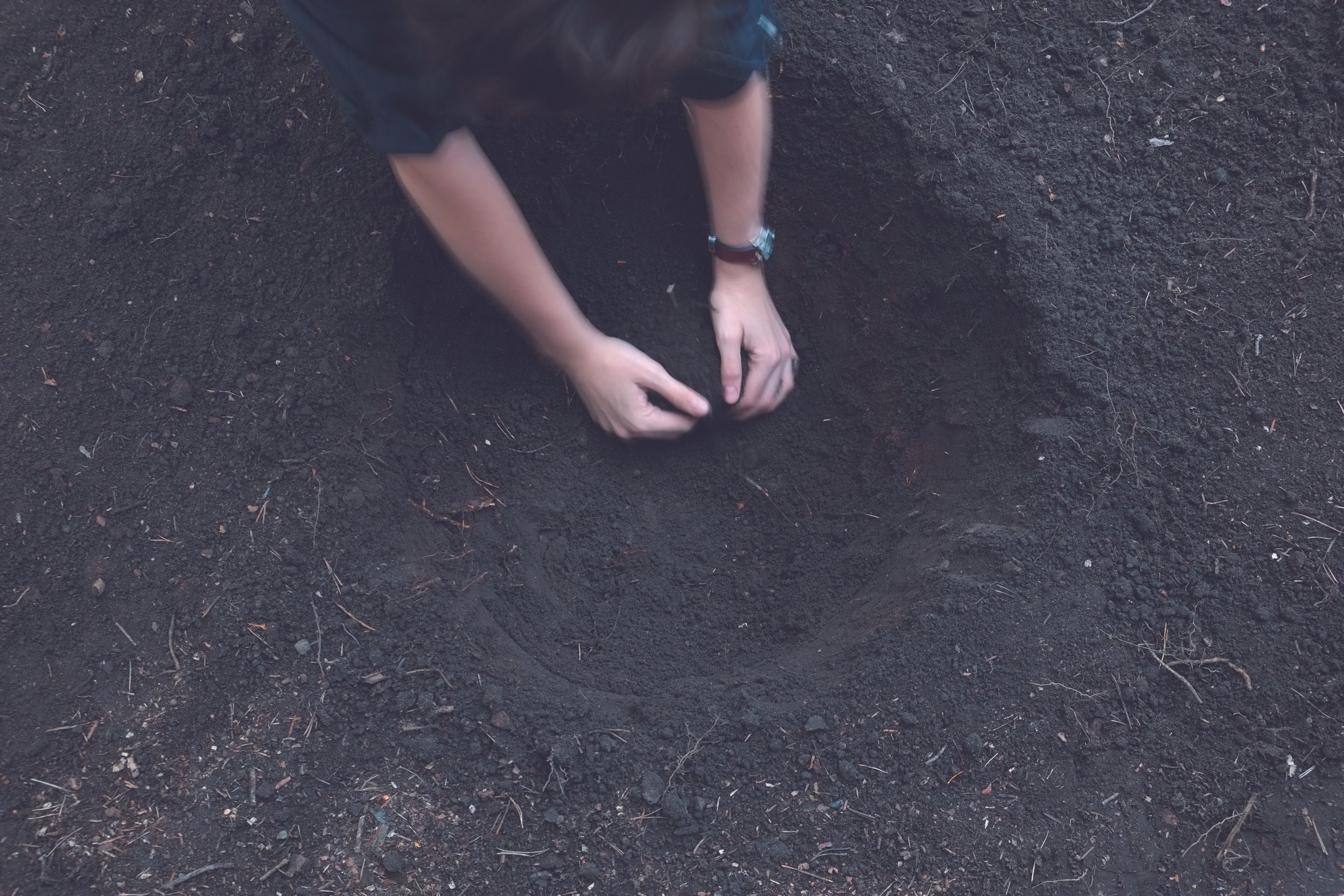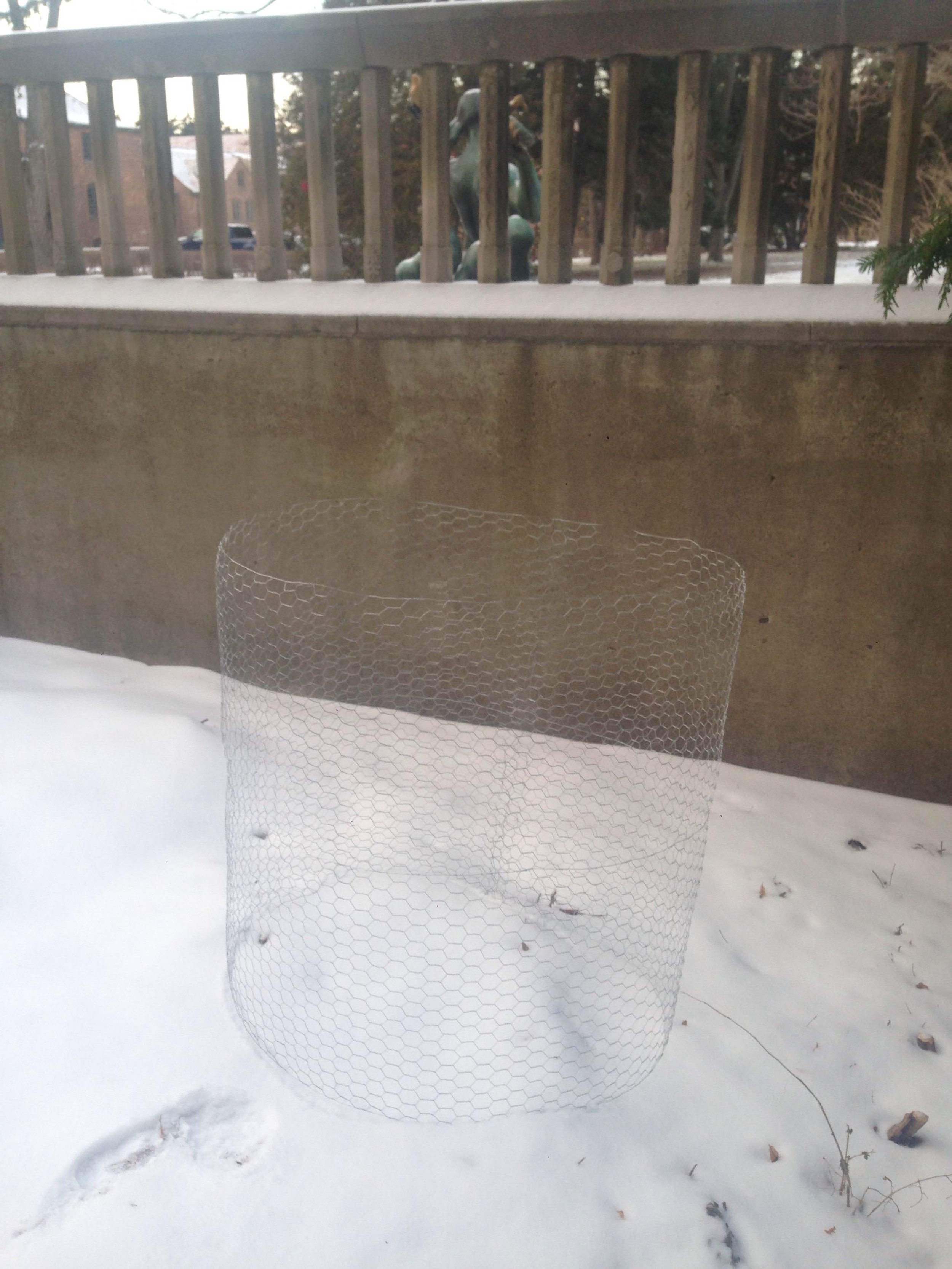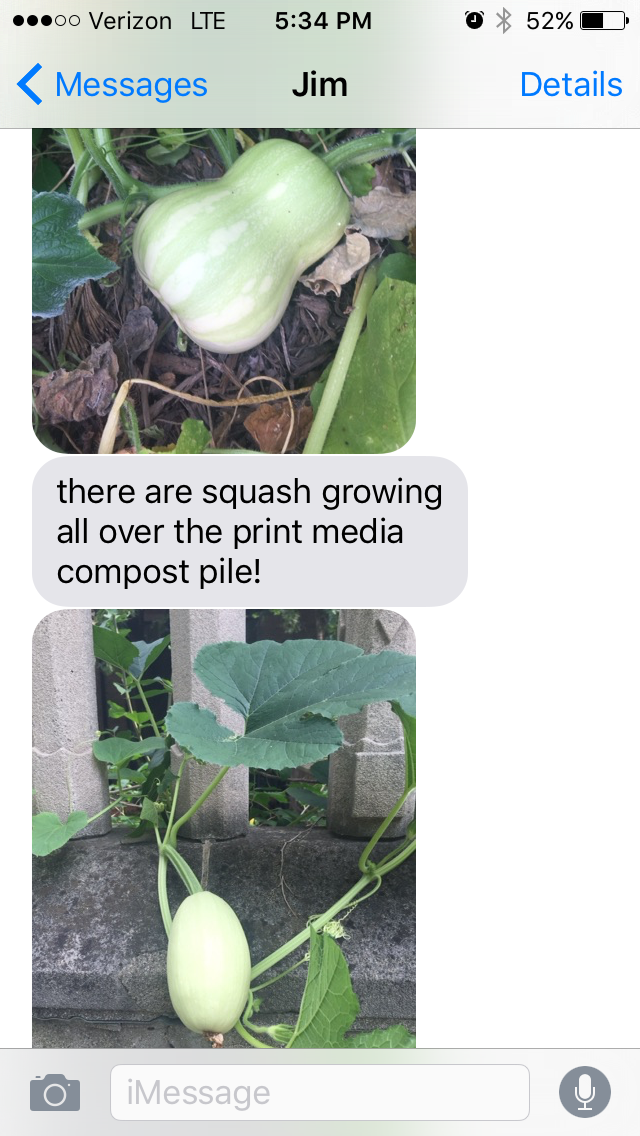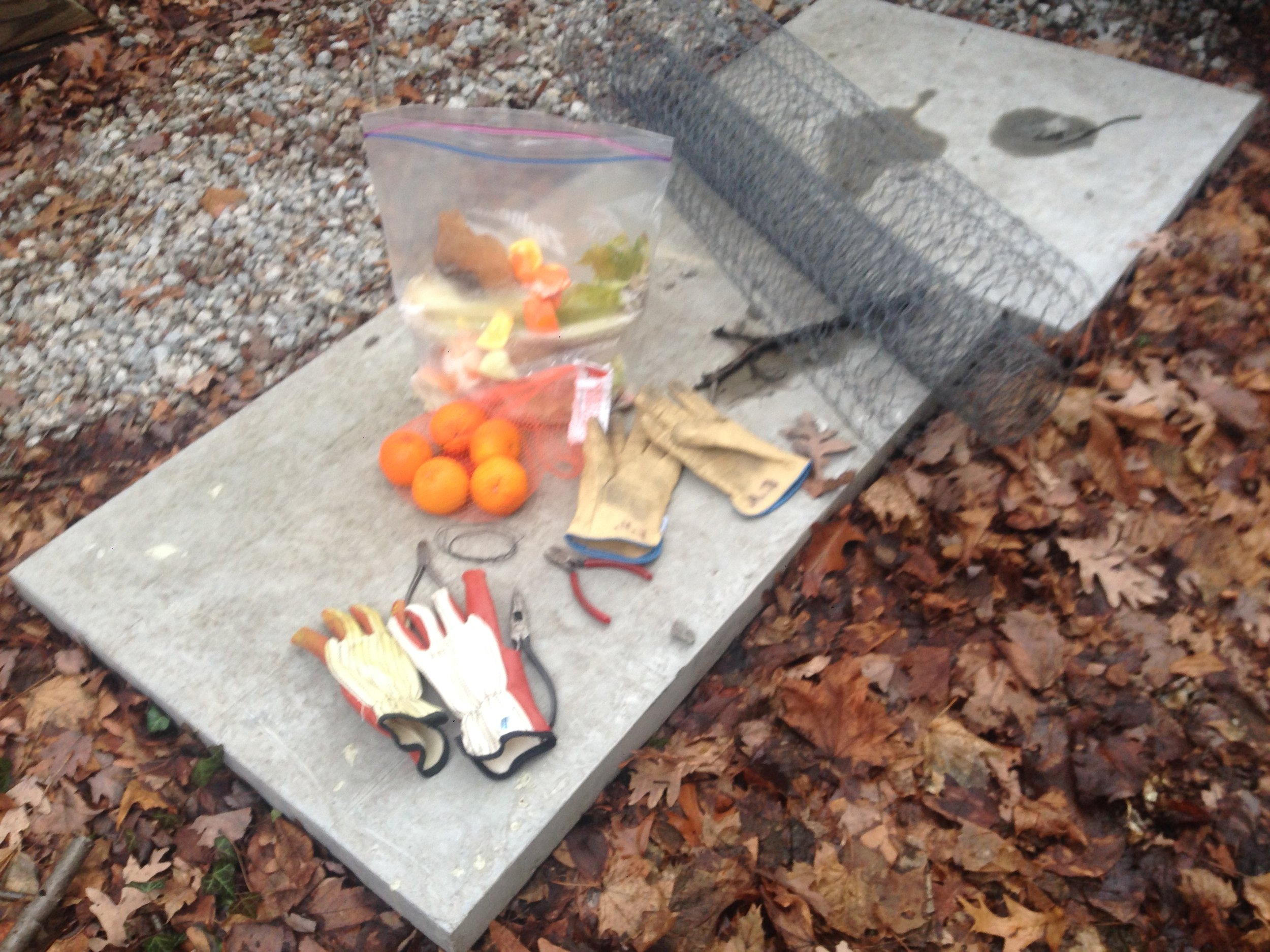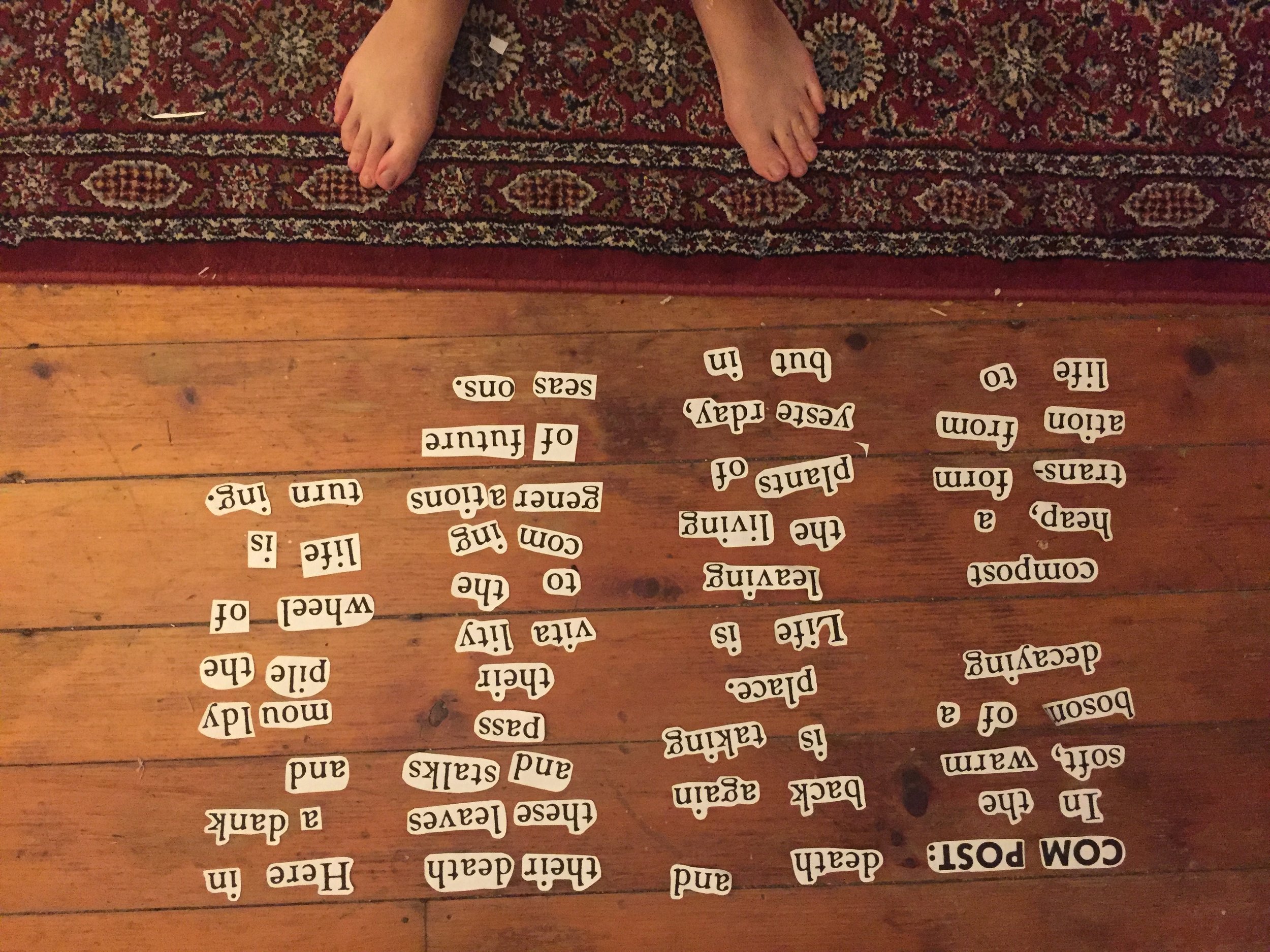Compost
When I began my graduate studies at Cranbrook Academy of Art, I was open to creating a new body of work that was inspired by my new location. One day, while walked in the wooded campus, I found Styrofoam peanuts strewn across the forest floor. Everywhere I walked, more peanuts! I found the source - a garbage dumpster on the edge of a parking lot.
I went back to my studio, found a basket, and spent the rest of the afternoon collecting the Styrofoam. That act felt more significant and important than anything I had made in my studio thus far.
Styrofoam peanuts on that beautiful day
Some of the materials I was working with in my studio that year
I had grown up with a compost bin in my backyard, and had made compost bins at my apartments and community gardens as an adult. I moved into the dorms at Cranbrook, which had communal kitchens. It felt so wrong to put my food scraps into the big garbage can that would be picked up and sent to the landfill.
I looked into ways that we could make a small compost bin near the kitchen, but was met with resistance. The Cranbrook campus is a National Historic Landmark, following rules and regulations about what types of structures could be built.
Food scraps from the printmaking kitchen
So, I spent the next two years experimenting with different ways I could compost on campus, through a series of sculptures, performances, prints, videos, and books. I started collecting food scraps in the Printmaking kitchen, and then needed to find places to put them to decompose.
The first worm compost bin I made, with over 1,000 worms, food scraps from the studio kitchen, and sawdust from the woodshop
The second worm compost bin I made (miniature sized!)
I built a 3-bin compost system at the community garden on campus - here it is on installation day…
Here are the compost bins after a few months. Each bin is at a different stage of decomposition
I asked the Dining Hall staff to collect food scraps from the kitchen. I would haul eight 5-gallon buckets at a time to the community garden on campus
I practiced Trench Composting in the woods on campus - digging a hole, filling it with food scraps, adding earth back on top, and letting it decompose.
I experimented with adding colored leaves on top of the compost piles for people to find as they walked through the woods
I made prints, books, and fabric patches to help spread the word and teach people about composting. In addition, I wrote a proposal for how the campus could continue composting after I graduated.
A proposal for how Cranbrook could compost in the future. It included a guide on how to compost, a map of the places I was collaborating with, and a budget for hiring maintenance staff to care for the compost piles.
The miniature zine that later became part of my Zero Waste series
These letterpress prints were the first descriptions I posted in our communal kitchen to share what could and could not be composted
Broadside prints about composting
I made a stop-motion film of me digging a compost trench, filling it with food scraps, and adding earth to the top.
A still from the film
Image from the film exhibition
I continued to add to the compost piles I built, and the piles continued to decompose and create compost! I led a workshop for students and staff, including how to make a $5 compost bin from chicken wire.
Some of the beautiful food scraps on top of the pile on a winter day. The piles got so hot that steam would come off of them, even in chilly weather!
Compost workshop, April 2016
I asked the landscaping crew to deliver leaves to the community garden, so we could store the leaves and use them throughout the year to balance out the food scraps in the compost bins. Tikva and I jumped in the giant pile after it was delivered :)
A simple compost bin I made from chicken wire. When empty, they were almost completely invisible. We used this compost bin for food scraps collected in the printmaking department kitchen - at the end of the year, I removed the chicken wire and the decomposed compost was distributed on site.
I was able to divert over 1 ton (2,000 pounds) of food scraps from the landfill in my two years there. While composting did not continue on campus in the way I originally envisioned, I am proud of the compost I created during my time and the conversations we had around sustainability and reducing waste.
A few months after graduating, my classmate, Jim, sent me these messages. Even though I dismantled the compost structure in the print media courtyard, the seeds from squash stayed in the soil, and grew into this amazing squash!
Over the years, I continue to compost my food scraps, teach workshops on composting, and encourage friends and community members to compost. Here are some more recent images of food scraps and compost.
Building a compost bin out of chicken wire with my friend
Compost bowl, NOT a salad
One of my very favorite compost piles
